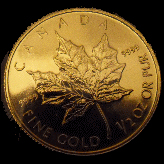Invest in Gold to Preserve Your Purchasing Power
by Jerry WhiteMany American investors are deeply concerned about the future of the US dollar, especially that the dollar’s continuing fall will lead to erosion of their wealth. They have heard commentators suggest that investing in gold can help preserve their purchasing power. Many are concerned about the following issues:
- That prices of goods and services will rise as a result of the Fed’s unrestrained printing of money and purchasing of Treasury bonds and mortgage-backed securities, and the administration’s policy of devaluing the dollar to encourage exports.
- That the burgeoning US public debt will further affect the country’s credit rating, making investors reluctant to roll over Treasury bonds at reasonable interest rates, and raising the cost of debt service and dragging the economy for years to come.
- That the climb in Treasury bond prices over the past few years is an unsustainable bubble, which will burst with devastating consequences for the dollar and the US financial system, kept intact now only because of unsustainable (and hence temporary) sovereign and banking insolvencies in Europe.
How can you hedge against inflation, hyperinflation and financial collapse?
Maybe nothing bad will happen. But there is no denying the risk.
If you managed a foreign central bank that held billions of dollars in your foreign exchange reserves, would you not be disturbed that their value was declining by the day? Would you consider swapping some of your dollars, perhaps just 5 or 10%, for gold? That is what some central banks are doing. Banks in developing countries such as China hold large quantities of dollars (and euros), and are reducing their currency risk by buying gold, as are Russia, South Korea, and Mexico, among others.
As an individual investor, you have an opportunity to protect your purchasing power by doing the same, by investing a portion of your dollar-based portfolio in gold, silver, and other precious metals. That is the principal motivation of American investors who have made their first gold purchases in the past year.
How to buy gold
Gold for investment is available in many forms, including gold bars and ingots, gold coins, exchange-traded funds, mining company shares, and gold futures and options. They are sold by various types of sellers (coin dealers, securities brokers, commodity brokers, and mutual fund managers), are available at different premiums (markups) over the London gold bullion price, and respond differently to changes in the London gold bullion price. Depending on an investor's goals, one or more of these forms will be most appropriate. Buying gold that is not appropriate to meet your goals will simply be expensive and may not accomplish what you need.
Gold from a vending machine?
In addition to traditional sellers, gold is now available on a trial basis from vending machines, which dispense small ingots from a gram (about 1/31 of a troy ounce) up to an ounce, plus American Gold Eagles in various denominations. The markup is said to be 5% to 15% over the bullion price, which is updated in the machine every minute or so, but might well be higher. While they have been described as “gold ATMs”, to earn that title, the gold they dispensed would have to be spendable at your local Starbucks. We are not there yet.
Our concerns: First, is the gold authentic? Just because the bars come with a certificate of authenticity issued by the machine's owners does not make them authentic. Second, check the premium. A 5% markup for a 1-ounce coin would make the machine roughly competitive with a coin dealer, as would a 15% markup for a fractional gold coin. For now, we see gold vending machines as a curiosity, perhaps suitable for buying fingernail-sized gifts for special occasions.
Are gold vending machines a sign that gold is already a bubble? Hardly, since this is a trial of a few machines. When they are installed in quantity at local shopping malls, let’s revisit the question.
Is gold an investment bubble?
A bubble happens when everyone already owns the asset — like tulip bulbs in 17th century Dutch Netherlands — and the last ones into the market hope to profit by selling to other novices at an even higher price. But when everyone is participating in the bubble, there is no one left to sell to, and the bubble suddenly bursts. With perhaps just 5% of American investors owning gold (and likely much less than that), it is not over-owned. Maybe some day it will justifiably be called a bubble. Now, it is just a highly volatile market that frightens the uninitiated.
Americans are buying precious metals, many for the first time. Some are concerned about the erosion of their purchasing power as the Fed runs the dollar-printing presses and buys Treasury bonds. Some are concerned about a possible collapse of the US financial system in the face of sharply rising government debt. Owning gold helps them protect the value of their wealth by assuring that part of it will maintain its purchasing power in case the dollar collapses in hyperinflation.

Precious Metals Investor’s Guide from TradersGame.com
To learn to invest in gold and silver, avoid pitfalls and save money by buying the form that is appropriate rather than one a salesman wants to sell you, read our precious metals investor’s guide, How to Buy Gold and Silver Today. Read it tonight and start protecting your purchasing power tomorrow.
Articles
Who Sets the Prices of Precious Metals?
Why a Rising Gold Price is Bad News
Hyperflation and Gold: Losing Faith in the Dollar
Invest in Gold to Preserve Your Purchasing Power
Buying Gold to Meet your Investment Goals
Pitfalls to Avoid When Investing in Gold
Making your First Silver Trade
Investing in Platinum-Group Metals
Will the US Government Confiscate Your Gold?

